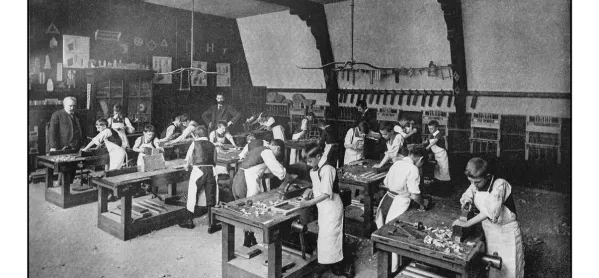Every year, in August, millions of teenagers wait with bated breath to find out how they have fared in their GCSEs and A levels. This year, levels of anxiety are even higher than normal, with all exams cancelled, and Ofqual and the Department for Education forced to find some other way of awarding grades in a fair way.
The debate over whether they have landed on a fair solution will continue to rage long after results day and on into the new school year (though credit where credit is due: an anticipated modest inflation in grades, and Ofqual’s recent move to allow schools to appeal where they feel there has been an injustice, are hugely welcome moves).
Fairness is the lodestar of our education system. All of the debates that rage focus on these very questions: is it fair? Is it equitable? Who does it advantage or disadvantage? Whether that’s about assessment, the introduction of new schools, Ofsted’s new framework - you name it, all debate is in the name of fairness, with both sides claiming a monopoly.
Changing the course of education history
But the original debate on fairness - allowing children across the country to have an education - dates back 150 years now. This weekend, we are celebrating the anniversary of Forster’s Education Act - or to give it its proper name, the Elementary Education Act of 1870.
This piece of legislation changed the course of history for our education system, setting a framework for the education of all children aged between 5 and 12. Local authorities were required to submit a return on the number of children in their area, compared with the number of places available. And, if there was a shortfall, a school board for the area would be set up.
In its first 10 years, the act resulted in somewhere between 3,000 to 4,000 schools being started or taken over by school boards. Standards were set in reading, writing and arithmetic, and attendance became compulsory in 1880 for children between the ages of 5 and 10.
By the time the school boards were abolished by the 1902 Education Act, replacing them with local education authorities, there were 5,700 board schools and 14,000 voluntary schools, educating more than 2.5 million and 3 million children respectively.
The debate rages on
And of course, while that period of time marked huge progress, in terms of access to education, it was not without controversy - there was a whole host of concerns, including those from leading lights such as Joseph Chamberlain, who were unhappy with the possibility that the act would effectively subsidise Church schools with taxpayers’ money.
The reverberations of that scale and speed of reform 150 years ago can be felt today, in the academies movement and the introduction of free schools to meet today’s needs for new schools.
The same fairness debates rage on. If anything, they have come full circle with Covid: so many young people cut off from education during lockdown, purely because they can’t access technology.
With the likelihood of further local lockdowns throughout the next academic year, with unthinkable impacts - especially on our most disadvantaged communities - it is our moral duty, collectively, to strain every sinew to ensure that the gap between the haves and the have-nots does not become a chasm.
A national step-change in schools’ online delivery; Oak National Academy; free devices and wi-fi for any child who needs it - we need to do all of this and more.
Just as Forster’s Act saw the education system thrown wide open, we need to throw it wide open again, taking each and every child with us.
Julian Drinkall is chief executive of Academies Enterprise Trust



